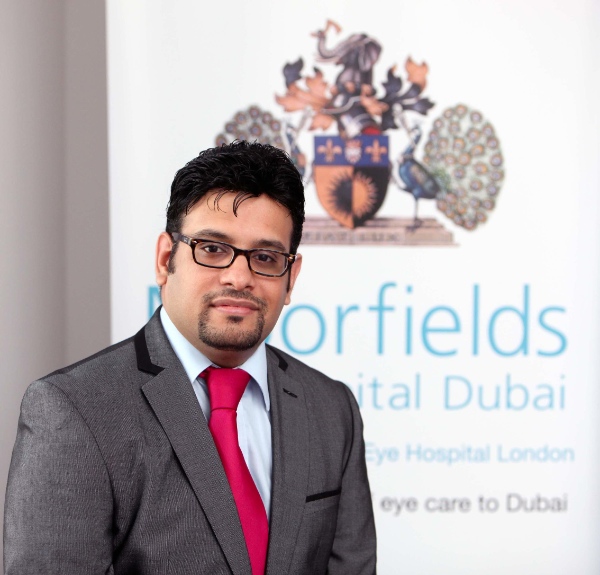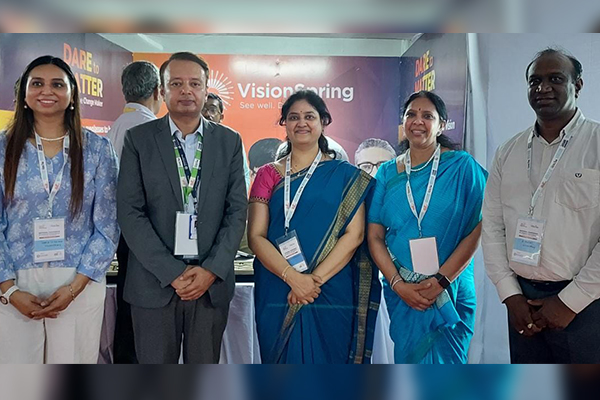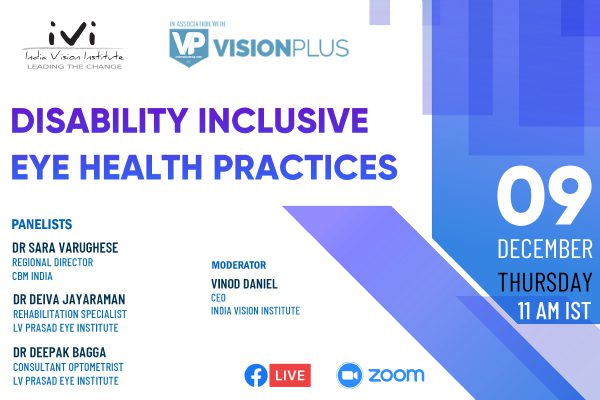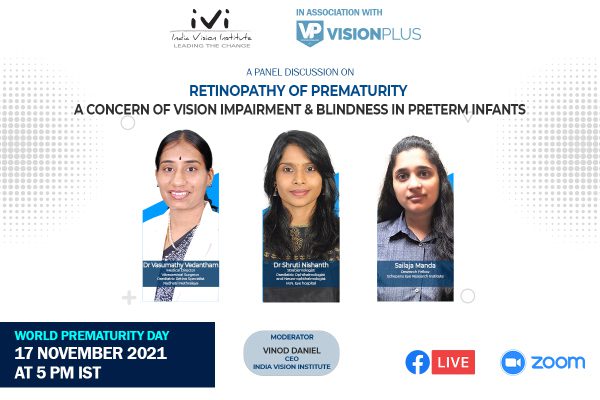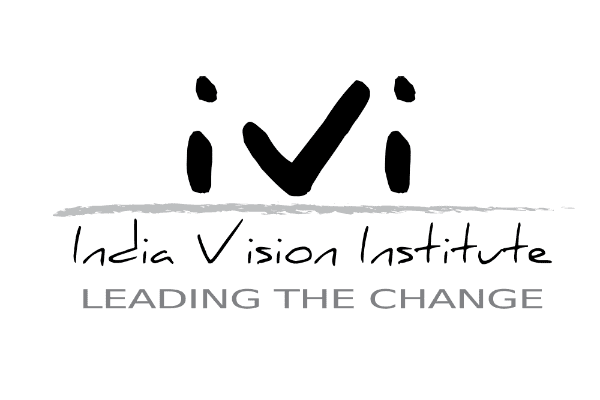Dubai-based eye health expert encourages regular Glaucoma screening in the UAE; link to diabetes increases risk of Glaucoma

Marking the conclusion of World Glaucoma Awareness Week 2015 (March 8-14, held under the theme of BIG – Beat Invisible Glaucoma), the Glaucoma expert at Moorfields Eye Hospital Dubai is calling for continued and greater awareness of the risk of this disease and highlighting the need for regular screening for older citizens and residents in the UAE to prevent Glaucoma blindness. The World Health Organisation estimates that Glaucoma affects around 60 million people globally.
Glaucoma is the second leading cause of blindness worldwide and the number one cause of irreversible blindness. However, the disease is treatable and blindness can be prevented through early diagnosis. Although children and young adults can be affected by Glaucoma, high risk groups include middle aged and older people (with an increasing risk from 40 years of age up), uncontrolled diabetics and those with a family history of Glaucoma.
Moorfields Eye Hospital Dubai (Moorfields) is highlighting the importance of Glaucoma awareness, and stressing the need for early detection. Screening for the disease and then compliance with the treatment regime are two important messages for the community.
According to the World Health Organisation, the number of people estimated to be blind as a result of primary Glaucoma is 4.5 million, accounting for slightly more than 12 per cent of all global blindness. The primary risk factors that are linked to the individual and the onset of the disease are age and genetic predisposition. The incidence of some types of Glaucoma rises with age and its progression is more frequent in people of African origin.
Glaucoma is called ‘the sneak thief of sight’ because there are no symptoms and once vision is lost, it is permanent. As much as 40 per cent of the field of vision can be lost without a person noticing. According to the Glaucoma Research Foundation, there are currently 2.7 million people in the United States over the age of 40 with Glaucoma. Experts estimate that half of these people do not know that they have the disease. The National Eye Institute projects that this number will reach 4.2 million by 2030, a 58 per cent increase.
Are There Symptoms?
“Unfortunately, many people with Glaucoma are unaware that they have it until there is a large amount of irreversible vision loss,” says Dr Mohammed Sohaib Mustafa, Consultant Glaucoma Surgeon at Moorfields Eye Hospital Dubai, speaking on the sidelines of a Glaucoma symposium in Dubai, where he presented the latest advances in Glaucoma surgery. “Glaucoma has no symptoms in its early stages and up to 40 per cent loss of sight can occur before any problem is noticed by the sufferer. This is why we are advising the community in the UAE – and especially those over the age of 40 – to undertake regular screening every year. It really could save your eyesight. We have a relatively young population in the UAE but with a high incidence of diabetes and so, as the population ages, there is the risk of an increase of Glaucoma.”
Glaucoma is a group of eye diseases that cause progressive damage of the optic nerve. If left untreated, most types of Glaucoma result (without any warning or obvious symptoms to the patient) in increasing visual damage and may lead to blindness. Once this has happened, the visual damage is permanent, which is why Glaucoma is described as the ‘silent blinding disease’ or the ‘sneak thief of sight’.
Is There A Cure?
There is no simple cure for Glaucoma yet, however it can definitely be treated and blindness can be prevented through early diagnosis and acceptance of treatment. Treatment with eye drops or surgery (conventional or laser) can halt or slow-down the disease and prevent further vision loss. Research aims to uncover the various mechanisms for the abnormal levels of intra-ocular pressure, nerve damage and the role of genes. Early detection is essential to limiting visual impairment and preventing the progression towards severe visual handicap or blindness. An eye care professional can detect Glaucoma in its early stages.
Screening
Screening for Glaucoma involves a mandatory eye pressure check, evaluation of the health of the optic nerve at the back of the eye by a specialist doctor and visual fields test if any changes are seen at the previous exams. All tests are pain free and easy to assess the disease when performed in proper ophthalmic hospitals or clinics. They should be done every 12 months as screening and can be accompanied by an optic nerve photo if needed.
“In most cases, Glaucoma appears after the fourth decade of life, and its frequency increases with age,” adds Dr Mohammed Sohaib Mustafa. “There is no clearly established difference in Glaucoma incidence between men and women. Other risk factors include genetics and family history, and other health conditions like uncontrolled diabetes, which is very common in the UAE. There is a wide ranging spectrum of cases ranging from patients who have established early Glaucoma and are compliant with treatment, to patients who have uncontrolled Glaucoma and either non-compliant with medication or indeed as we have highlighted, don’t know they have the condition.”
Read more on Glaucoma Prevention and Treatment.

